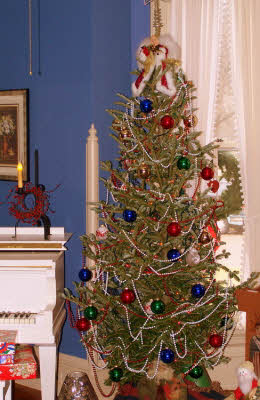The Christmas Tree
Christmas Tree History, Customs, Traditions, and Images
 The Christmas Tree is a popular Christmas custom in the Western world. In many countries, decorating an evergreen tree (whether real or artificial) is a time-honored tradition that both children and adults look forward to. The evergreen, which is green and vibrant all year long, is said to symbolize the new life that Christ brought us at His birth.
The Christmas Tree is a popular Christmas custom in the Western world. In many countries, decorating an evergreen tree (whether real or artificial) is a time-honored tradition that both children and adults look forward to. The evergreen, which is green and vibrant all year long, is said to symbolize the new life that Christ brought us at His birth.
According to legend, it was St. Boniface (AD 672-754) who is first associated with the Christmas tree tradition. The story goes that he cut down a sacred tree of Thor and replaced it with a fir tree, likely with the intention of replacing a popular pagan symbol with a Christian one. However, the actual practice of bringing an evergreen into the home and declaring it a "Christmas tree" did not emerge until the 1400s in Germany. No matter what the origin, chopping down and decorating the Christmas tree is an important and fun custom that many people look forward to every year. A whole industry has grown up around selling and decorating them.
Traditionally, families did not put up a Christmas tree until December 24th (which is when, in the Catholic Tradition, Christmas begins), and the tree would remain up until Epiphany (when the 12 days of Christmas end) or longer. Sometimes the tree and other greenery would remain until Candlemas, although a common superstition was that if you left your greenery up past Candlemas, you would die! In the 21st century, when Christmas seems to start earlier each year, many people put the tree up at the beginning of Advent.
Updated 12-16-2016